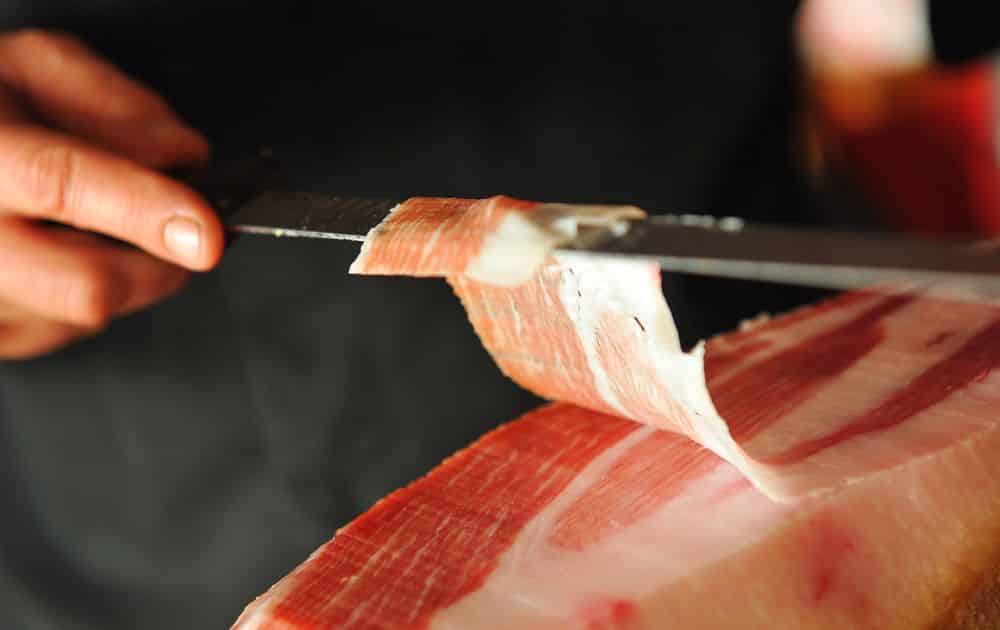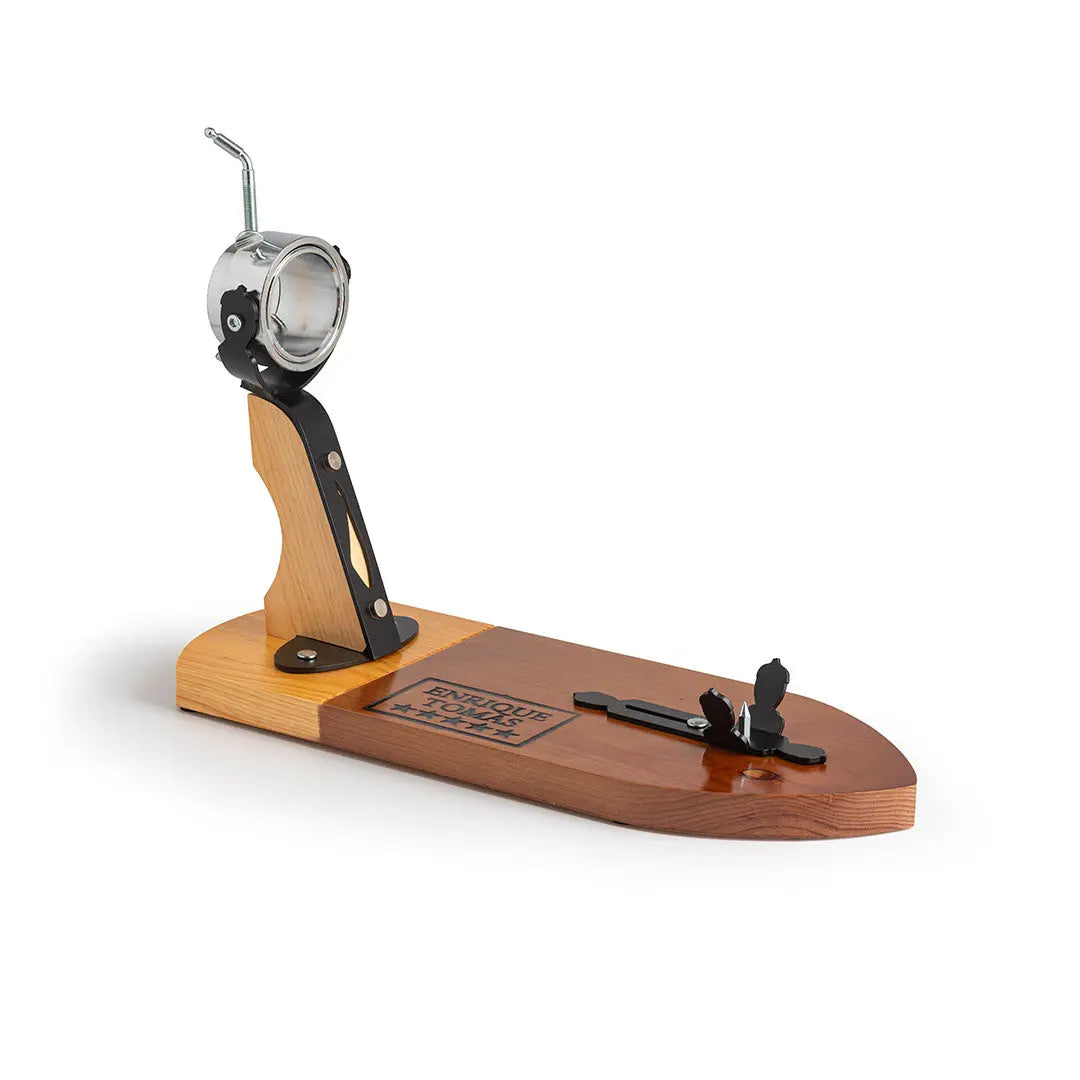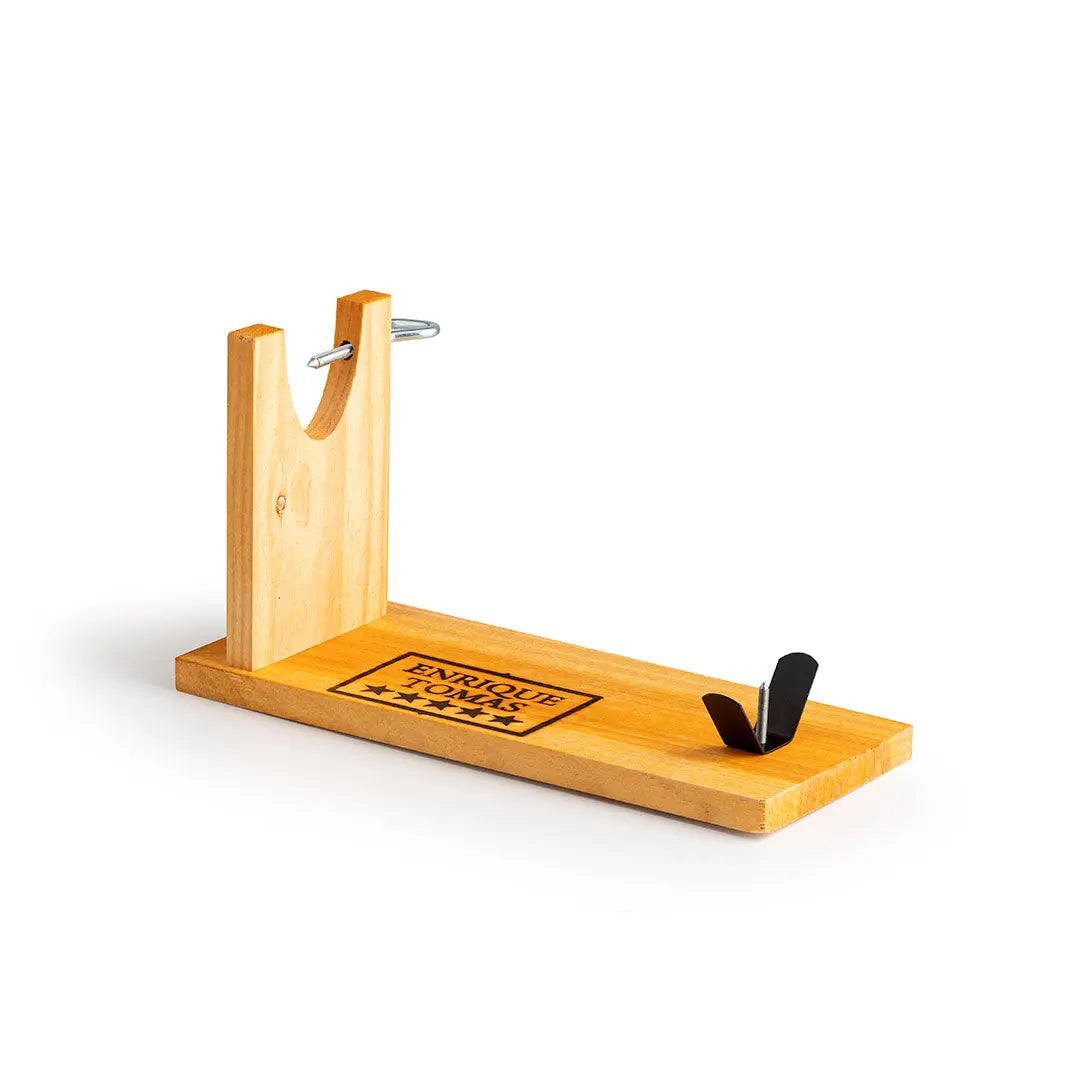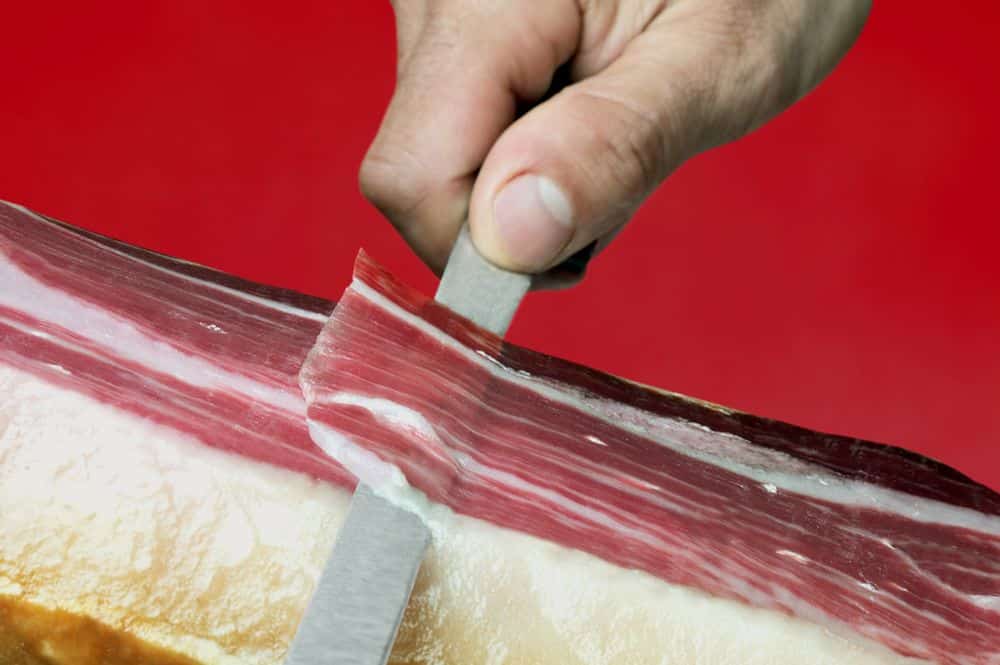
How to cut a perfect slice of Jamón/Ham
The essence of enjoying good ham is not only in having a well-cured and high-quality product, but also in the slicing.
At Enrique Tomás, we've said it many times and we never get tired of saying it: a proper slice of ham or shoulder is essential to achieve two main goals: great flavor that pleases the palate and maximum yield from the piece.
This is why cutting a perfect slice makes all the sense in the world.

Therefore, a bad cut would imply significant harm, as it would result in the loss of nuances in flavor and texture. Above all, it would lead to wasting and ruining a gourmet product that has cost money and years of dedication and care from the hands of expert artisans in its production. What a shame not to do it right, isn't it? Everything leads us to a simple detail: if we cut a slice well and continue to do so, we will achieve both objectives.
Of course, it's impossible to cut an entire ham without making mistakes several times; even the best master slicers don't achieve it. Nor is it possible to slice an entire piece, be it a shoulder or ham, into slices, as there are areas where the ham knife can't reach, and they need to be cut with a boning knife. This is where the delicious shavings and tasty little cubes come from, which are great for snacks and especially for sandwiches, particularly the shavings. Of course, as you might have deduced, the tools we use are of utmost importance to achieve a perfect, well-defined cut and ensure the cutter's safety.
The Necessary Tools
When buying ham, if it's a whole piece, we must have the basic tools necessary for proper slicing and for ensuring the safety of our hands. We're talking about a ham holder (jamonero), a ham knife (cuchillo jamonero), and a boning knife (cuchillo de deshuesar or puntilla). Of course, there are more tools like tongs to avoid touching the ham with your hand, protective gloves if you're truly a beginner. These last ones are optional but not essential.
A Ham Holder (Jamonero)
There are various types, ranging in price from >10 euros to <100 euros. The most important thing is that they are secure and hold the ham or shoulder well, preventing any movement. Otherwise, poor stability affects the cut and increases the risk for the slicer.
IMPORTANT: all ham holders work for slicing a shoulder, but not all are suitable for slicing a ham, as there are different sizes and levels of strength. It's not the same to hold a shoulder, weighing around 4.5-5 kg, as a ham that can weigh over 9 kg.
Therefore, be aware of this if you want to buy a ham holder or ensure that the one you have at home will fit the ham you've purchased or been given. If the piece is too large or heavy for the ham holder you have and you're not going to buy another one, the best advice is to have it sliced by someone you trust. That way, you're sure to get the proper cut and avoid injuring yourself in the attempt. If you didn't have a spoon to have a bowl of consommé, you would probably drink it in a cup, but it wouldn't occur to you to use a fork, right?
Types: there are many, but we'll highlight the most common ones
- Rotating type: these are the most complete, practical, and secure. They feature a wooden or metal base with a wooden or metal bar that ends in a rotating circle. This mechanism holds the ham by the hoof and allows it to be rotated without removing it, supporting its weight to flip it. Ideal for all types of ham and shoulder.

- With movable arms: this type is simpler and more affordable than the previous one but can also be used for both ham and shoulder.

- The classic and simplest: this ham holder is very basic but serves its purpose. It's recommended for use with shoulders, as its capacity is smaller than the previous two. It can also be used with a ham that's not too large or heavy; otherwise, it will affect stability and hoof grip.

Quality Knives
First, we'll use a boning and skinning knife to remove the rind and yellowish fat and make a V-cut in the lower area of the hoof. In this video, you'll see the tools and how one of our master ham slicers, in this case a female master ham slicer, begins slicing. The ham knife, above all, is the most important, as it determines the cut of each slice.
For this, it must be properly sharpened, as if it doesn't cut well, we might not only hurt ourselves by forcing it too much, but the slices will likely be too thick. So, get yourself some good slicing knives to start cutting.
How to Slice the Perfect Ham Slice
The best slice is one that our palate easily embraces so that, with minimal effort in chewing, the slice melts into a cascade of aromas and flavors. Obviously, the degree of taste and textures will also depend on the ham's curing time, its quality, and whether it's a shoulder or a ham.
The slices of a shoulder, for example, will be smaller for obvious reasons compared to those of a ham (especially in width). A well-sliced slice of acorn-fed Iberian ham will melt on our palate faster than that of a grain-fed Iberian ham. Quality and, above all, the type of feeding significantly influence the taste and texture of the ham.
Does Thickness Matter?
Of course, and a lot. For a slice to be perfect, in addition to easily fitting into our palate, it should be thin to enhance each nuance and aroma.
If it's too thick, even if it's the best acorn-fed ham in the world, the flavor will fade away in the mere act of chewing. Ideally, when slicing the slice, you should see the knife through the cut as it glides.

The ham knife should glide and be seen underneath each slice
- If you want to learn more about knives, you'll find more information and ideas here. And if you're not confident in slicing, don't complicate your life; bring it to us, and we'll slice it for you, or order it pre-sliced. The choice is yours!





